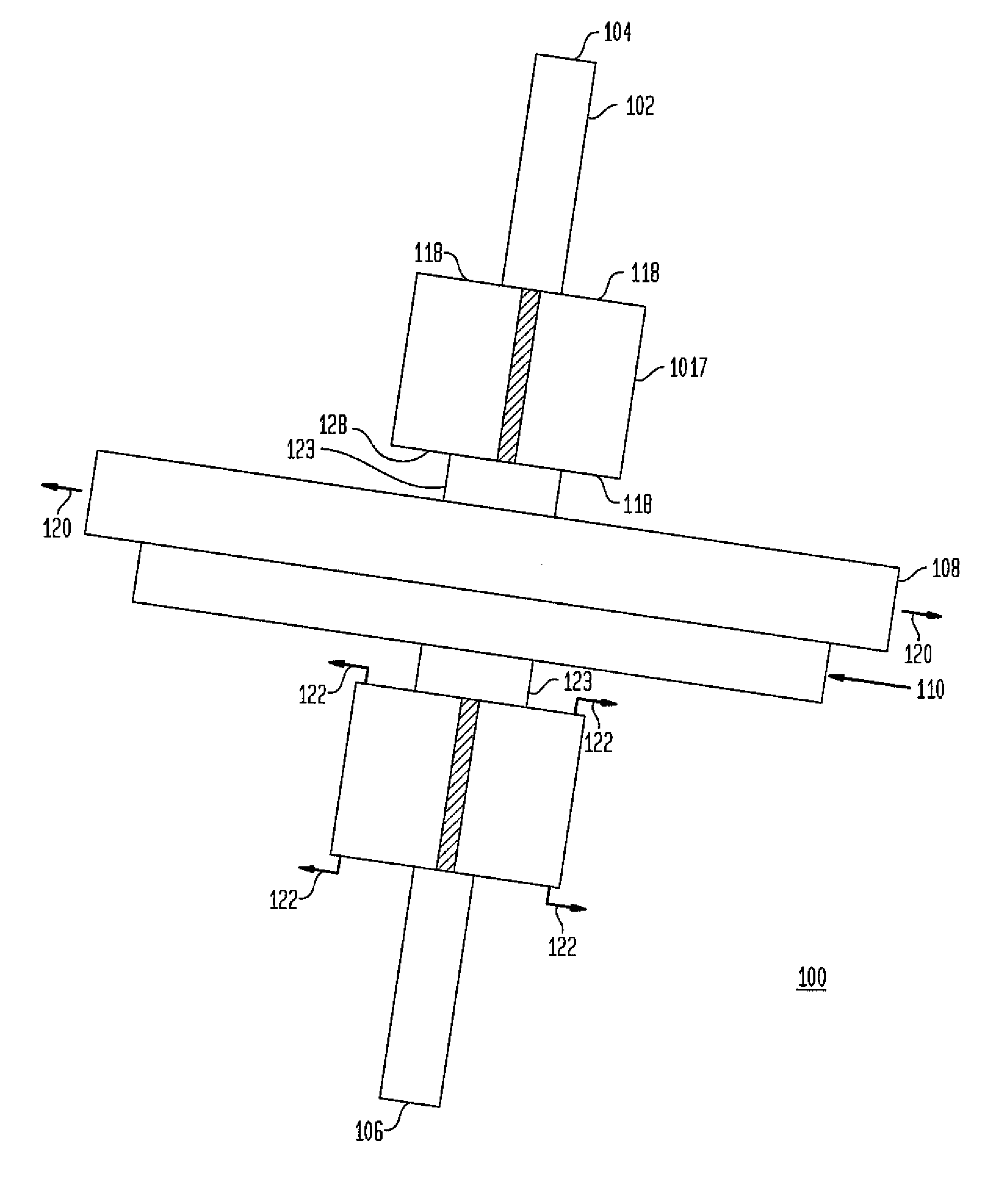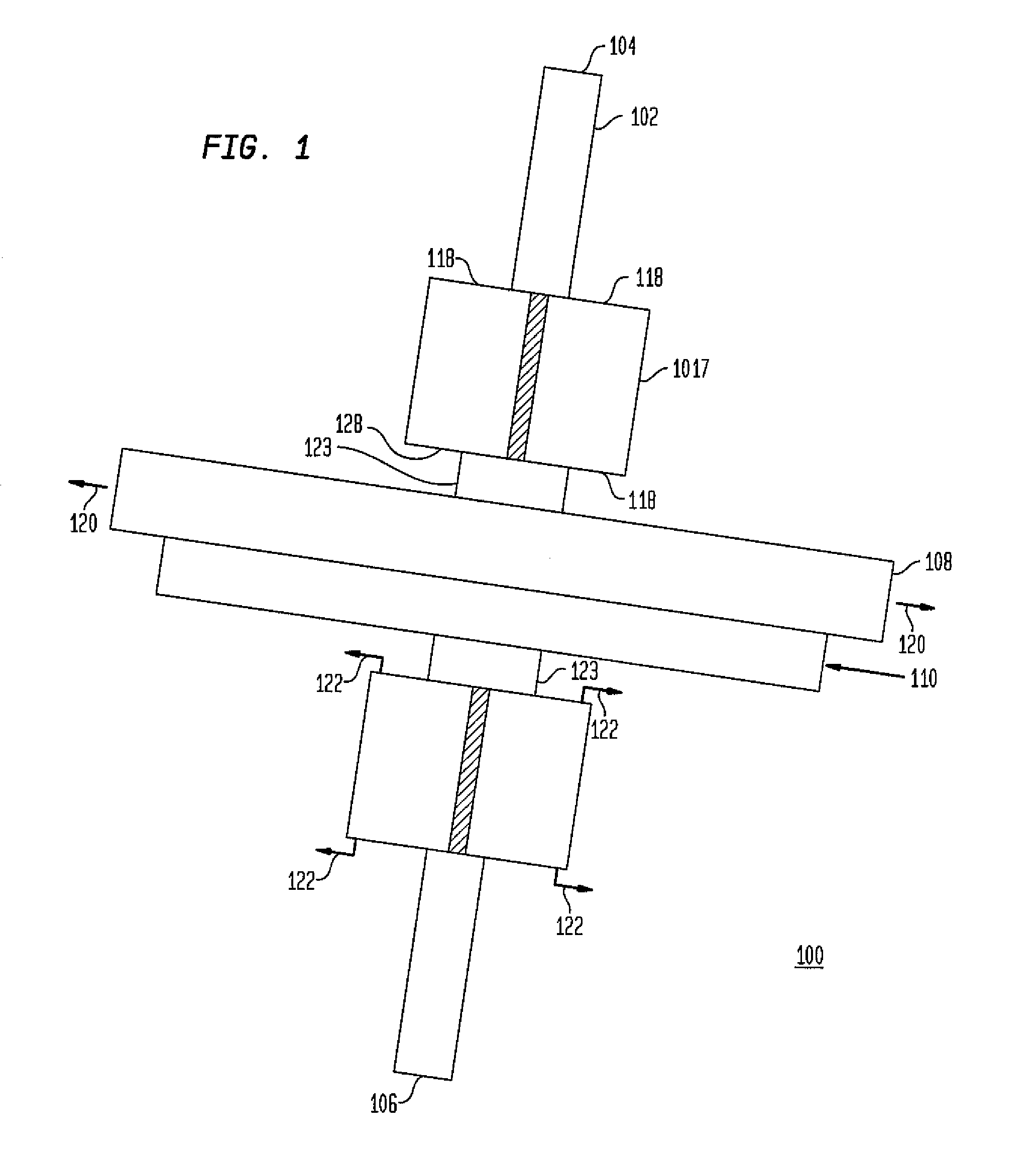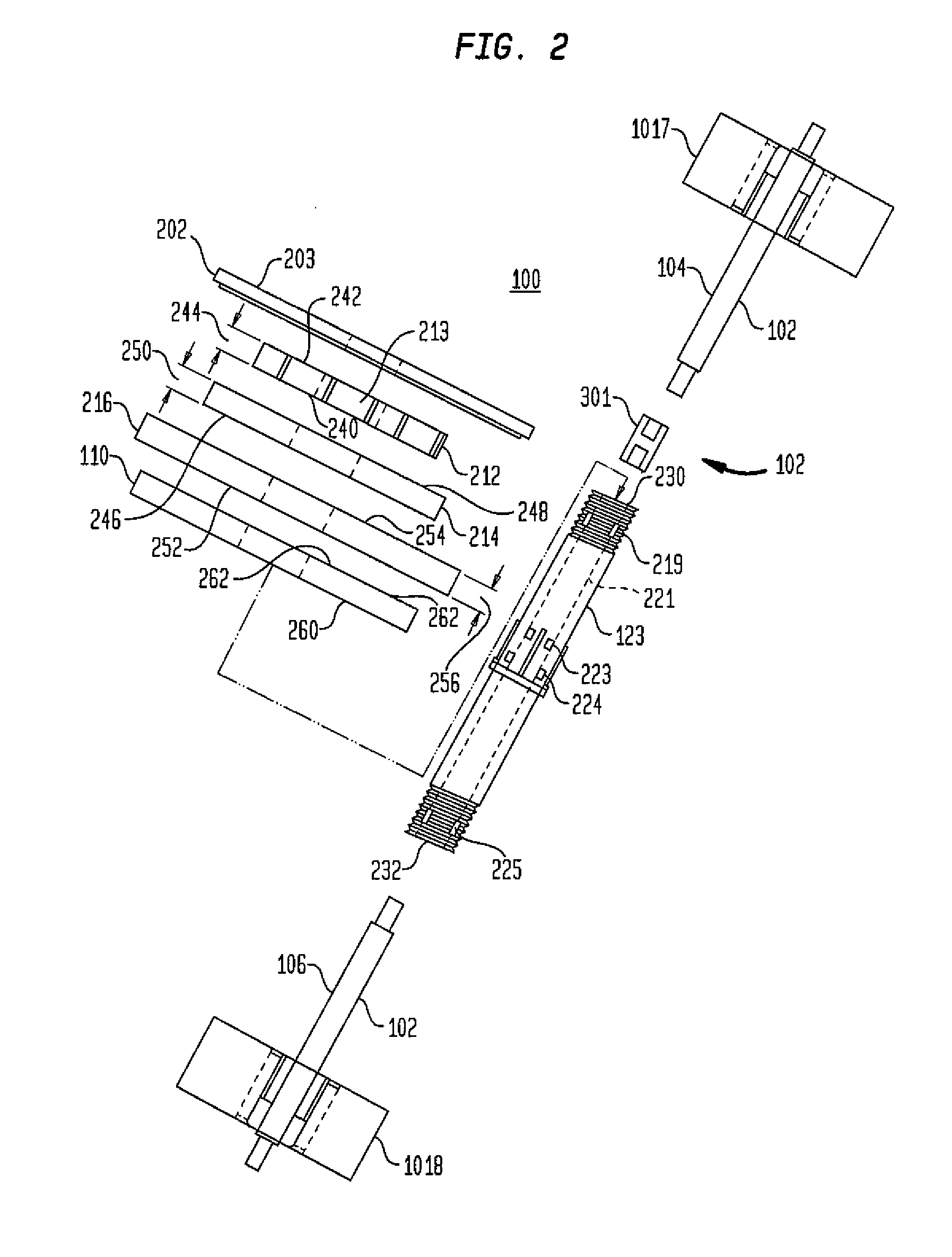Device and Method For Particle Separation
a technology of gas specie and aerosolized gas, which is applied in the direction of dispersed particle separation, separation process, centrifuge, etc., can solve the problems of inability to achieve acceptable production, inability to achieve centrifuge, and small centrifuge size, etc., to achieve enhanced separation effect and increase centrifugal pressur
- Summary
- Abstract
- Description
- Claims
- Application Information
AI Technical Summary
Benefits of technology
Problems solved by technology
Method used
Image
Examples
second embodiment
[0067]Embodiments of the present device and method are referred to herein generally as a, “separation device.” Exemplary embodiments of the separation device include a centrifuge rotor configured in multiple embodiments, including a linear nozzle-gas skimmer system, a curved nozzle system, or combinations thereof. As used herein, the terms “exemplary” indicates a sample or example. It is not indicative of preference over other aspects or embodiments. An embodiment of the linear nozzle-gas skimmer system uses a separation configuration having a convergent nozzle followed by a first gas skimmer and followed by a second gas skimmer arranged to correlate and operate in a rotatable centrifuge rotor. the curved nozzle based separation device uses a nozzle insert, an inlet mouth, a nozzle throat connected to a divergent outlet via a concave divergent nozzle, and a skimmer throat. As used herein, the embodiments of the separation configurations with a linear nozzle-gas skimmer, curved nozzl...
first embodiment
[0084]The base and second skimmer ring 216 has an interior wall 501 extending above the bottom surface 522 and positioned between the outer edge of the first skimmer receptor 508 and the outer wall 502. A plurality of second critical throats 518 are located at regular intervals along the interior wall. As shown in FIG. 5B, in one embodiment, the interior wall 512 is composed of a plurality of adjacent, generally block-U shaped, walls that together form a plurality of apex skimmers 524, also referred to herein as a type of or simply as an V-point skimmer, at the intersection of two side walls 514, 516. A second critical throat 518 is formed at each inverted V point, or apex skimmer 524 by two side walls 514, 516, and again, the two side walls 514, 516 act as deflection surfaces for the oncoming gas expansion from the critical throat 616, and the angle of deflection for side walls 514, 516 are in a half-angle range of from about 12° to about 24°. The apex skimmer 524 of the base and s...
PUM
| Property | Measurement | Unit |
|---|---|---|
| radius | aaaaa | aaaaa |
| speed | aaaaa | aaaaa |
| pressure | aaaaa | aaaaa |
Abstract
Description
Claims
Application Information
 Login to View More
Login to View More - R&D
- Intellectual Property
- Life Sciences
- Materials
- Tech Scout
- Unparalleled Data Quality
- Higher Quality Content
- 60% Fewer Hallucinations
Browse by: Latest US Patents, China's latest patents, Technical Efficacy Thesaurus, Application Domain, Technology Topic, Popular Technical Reports.
© 2025 PatSnap. All rights reserved.Legal|Privacy policy|Modern Slavery Act Transparency Statement|Sitemap|About US| Contact US: help@patsnap.com



